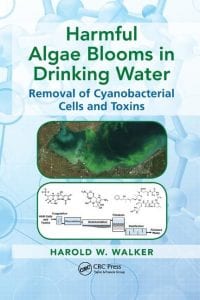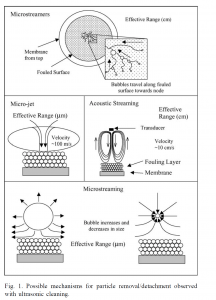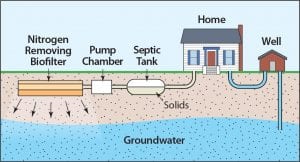Providing Water Vital for Life and Ecoystems
The overarching thrust of my research is to advance the sustainability of water resources and understand the interconnections between water, food, energy and social progress. More specifically, my work aims to protect and more efficiently utilize vital sources of pure water and to re-envision “wastewater” as a resource. More recently, my work has focused on providing safe and sustainable drinking water, developing novel membrane materials and processes for water purification, and creating new technology to envision wastewater as a resource.
Safe and Sustainable Drinking Water
My research in these area aims to develop novel tech nology for the purification of water. My work has examined a number of contaminants of concern, including disinfection by-product pre-cursors, arsenic, manufactured nanomaterials, cyanotoxins, 1,4 dioxane, to name a few. Of particular interest is the development of more effective technology for the removal of cyanotoxins (e.g., microcystins, cylindrospermopsin, anatoxin, and saxitoxin) from drinking water. Conventional water treatment processes are generally ineffective at removing these toxins such from drinking water. To address this need, my research has focused on the development of novel membrane and adsorption processes for the removal of harmful algal bloom toxins from drinking water. My research group was the first to demonstrate the application of ultrafiltration (UF) coupled to powdered activated carbon (PAC) for removing microcystin-LR from drinking water. We showed that UF-PAC was capable of greater than 90% removal of microcystin-LR at PAC dosages much lower than conventional processes.
nology for the purification of water. My work has examined a number of contaminants of concern, including disinfection by-product pre-cursors, arsenic, manufactured nanomaterials, cyanotoxins, 1,4 dioxane, to name a few. Of particular interest is the development of more effective technology for the removal of cyanotoxins (e.g., microcystins, cylindrospermopsin, anatoxin, and saxitoxin) from drinking water. Conventional water treatment processes are generally ineffective at removing these toxins such from drinking water. To address this need, my research has focused on the development of novel membrane and adsorption processes for the removal of harmful algal bloom toxins from drinking water. My research group was the first to demonstrate the application of ultrafiltration (UF) coupled to powdered activated carbon (PAC) for removing microcystin-LR from drinking water. We showed that UF-PAC was capable of greater than 90% removal of microcystin-LR at PAC dosages much lower than conventional processes.
More recently, I have been working with a team of researchers to examine new approaches for removing 1,4-dioxane from drinking water. 1,4-Dioxane is listed on the fourth USEPA Contaminant Candidate List (CCL4). 1,4-Dioxane is a probable human carcinogen and has been detected in groundwater across the United States. Nationwide, nearly 7% of public water suppliers detected concentrations of 1,4-dioxane greater than the 10-6 cancer risk guideline of 0.35 g/L.
Novel Membrane Materials and Processes
 A particular focus of my research has been on the development of novel membrane materials and processes. The use of membranes is a widely employed, versatile, and effective separation process. Different membrane types, ranging from microfiltration (MF) to reverse osmosis (RO), are capable of removing suspended particles and microorganisms to rejecting virtually all ions in solution, respectively. A significant impediment to the efficient operation of a membrane system, however, is membrane fouling. Reductions in the prices of membrane systems and operating costs have occurred, but fouling remains a significant problem. My research in this area has focused on novel membrane materials and processes to minimize the potential for membrane fouling.
A particular focus of my research has been on the development of novel membrane materials and processes. The use of membranes is a widely employed, versatile, and effective separation process. Different membrane types, ranging from microfiltration (MF) to reverse osmosis (RO), are capable of removing suspended particles and microorganisms to rejecting virtually all ions in solution, respectively. A significant impediment to the efficient operation of a membrane system, however, is membrane fouling. Reductions in the prices of membrane systems and operating costs have occurred, but fouling remains a significant problem. My research in this area has focused on novel membrane materials and processes to minimize the potential for membrane fouling.
Currently, I am collaborating with colleagues in the Department of Chemistry at Stony Brook University on the development and application of nanocellulose membrane technology. We are exploring the development of novel membrane materials synthesized whole or in part with naturally occurring nanocellulose. Nanocellulose is a hydrophilic material, and therefore, we expect these materials will be less prone to fouling since hydrophobic interactions often play an important role in controlling the fouling process. As a nanostructured material, nanocellulose has unique physical properties akin to carbon nanotubes. We are currently developing new synthesis techniques for nanostructured cellulose and exploring applications for water purification and material recovery.
Envisioning Wastewater as a Resource
Wastewater is a potentially valuable source of water, energy and nutrients. My work aims to to re-envision “wastewater” as a resource. We are interested in the development of novel onsite treatment technologies for nutrient removal and/or recovery. To this end, I am working with a number of collaborators to apply advanced molecular tools, such as 16S rRNA sequencing and quantitative Polymerase Chain Reaction (qPCR), to relate microbial structure and function to system performance and design. We are also elucidating the nitrogen transformation pathways and quantifying the removal of emerging contaminants, such as personal care products and pharmaceuticals.

A major focus of our efforts is on the research and development of Nitrogen Removing Biofilters, or NRBs. NRBs are relatively simple systems consisting of a layer of sand overlaying a mixture of sand and woodchips. Septic tank effluent is distributed atop the NRB and flows by gravity through the upper sand layer which facilitates nitrification through passive aeration. Anaerobic conditions are created in the lower sand/woodchip layer which promotes heterotrophic denitrification. We are currently examining both basic and applied research questions related to NRBs at a number of full-scale installations on Cape Cod in Massachusetts on on Long Island, New York. Our goal is to develop this technology such that it reduces total nitrogen to 10 mg/L or less, costs less than $10,000, and has an operational lifetime of at least 30 years.
 nology for the purification of water. My work has examined a number of contaminants of concern, including disinfection by-product pre-cursors, arsenic, manufactured nanomaterials, cyanotoxins, 1,4 dioxane, to name a few. Of particular interest is the development of more effective technology for the removal of cyanotoxins (e.g., microcystins, cylindrospermopsin, anatoxin, and saxitoxin) from drinking water. Conventional water treatment processes are generally ineffective at removing these toxins such from drinking water. To address this need, my research has focused on the development of novel membrane and adsorption processes for the removal of harmful algal bloom toxins from drinking water. My research group was the first to demonstrate the application of ultrafiltration (UF) coupled to powdered activated carbon (PAC) for removing microcystin-LR from drinking water. We showed that UF-PAC was capable of greater than 90% removal of microcystin-LR at PAC dosages much lower than conventional processes.
nology for the purification of water. My work has examined a number of contaminants of concern, including disinfection by-product pre-cursors, arsenic, manufactured nanomaterials, cyanotoxins, 1,4 dioxane, to name a few. Of particular interest is the development of more effective technology for the removal of cyanotoxins (e.g., microcystins, cylindrospermopsin, anatoxin, and saxitoxin) from drinking water. Conventional water treatment processes are generally ineffective at removing these toxins such from drinking water. To address this need, my research has focused on the development of novel membrane and adsorption processes for the removal of harmful algal bloom toxins from drinking water. My research group was the first to demonstrate the application of ultrafiltration (UF) coupled to powdered activated carbon (PAC) for removing microcystin-LR from drinking water. We showed that UF-PAC was capable of greater than 90% removal of microcystin-LR at PAC dosages much lower than conventional processes. A particular focus of my research has been on the development of novel membrane materials and processes. The use of membranes is a widely employed, versatile, and effective separation process. Different membrane types, ranging from microfiltration (MF) to reverse osmosis (RO), are capable of removing suspended particles and microorganisms to rejecting virtually all ions in solution, respectively. A significant impediment to the efficient operation of a membrane system, however, is membrane fouling. Reductions in the prices of membrane systems and operating costs have occurred, but fouling remains a significant problem. My research in this area has focused on novel membrane materials and processes to minimize the potential for membrane fouling.
A particular focus of my research has been on the development of novel membrane materials and processes. The use of membranes is a widely employed, versatile, and effective separation process. Different membrane types, ranging from microfiltration (MF) to reverse osmosis (RO), are capable of removing suspended particles and microorganisms to rejecting virtually all ions in solution, respectively. A significant impediment to the efficient operation of a membrane system, however, is membrane fouling. Reductions in the prices of membrane systems and operating costs have occurred, but fouling remains a significant problem. My research in this area has focused on novel membrane materials and processes to minimize the potential for membrane fouling.

